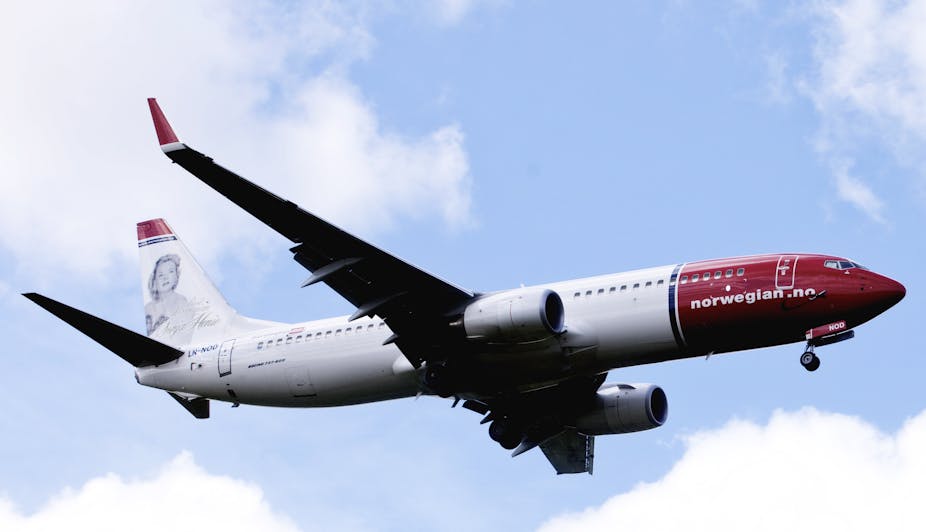Donald Trump recently urged US lawmakers to accept fewer immigrants from “shithole countries” – such as Haiti and poorer African nations – and more from the likes of Norway. It seems Trump labours under a common misconception that the Scandinavian countries are ethnically and economically homogeneous.
Among Scandinavian countries, Denmark has the most restrictive immigration policy and Sweden the most open one, with Norway falling somewhere in between. These differences are reflected in the number of foreign-born. In Sweden, 15% of residents are foreign-born; in Norway it’s 11%, and in Denmark 8%. So where in the world do these residents come from?
Sweden, Norway and Denmark all host tens of thousands of people from nearby European states – Poland, Finland and Germany in particular. But other countries on which Trump is far less keen feature heavily too: Syria makes the top ten in all three, with Somalia, Pakistan and Eritrea all well represented.
On the face of it, then, the Scandinavian countries are rather more open to what Trump would call “shithole countries” than the US president might think. But as it often goes with immigration, there’s more going on here than the numbers alone would indicate. The way immigrants are categorised in these statistics says a lot about how Sweden, Denmark and Norway’s different immigration policies work.
Danish official population statistics make a distinction between immigrants from “Western countries” (Vestlige lande) and “non-Western countries” (Ikke-vestlige lande) – a centuries-old colonial and imperialist model that pits the “West” against the threatening and inferior “non-West”. It also glosses over the question of what actually counts as “the West”, and reinforces a binary view of “good” and “bad” immigrants.
Norwegian statistics do not rest on a blunt West-versus-the-rest distinction, but the categories they use are still highly dubious. Majority-white countries are lumped into one category which is essentially equivalent to the West in Danish statistics: among other categories, immigrants can be from the “EU28/EEA, USA, Canada, Australia and New Zealand”, “Africa”, “Asia including Turkey” and “South and Central America”. So while Norway parses the non-West into distinct parts, these parts nonetheless are nonetheless kept separate from the whiter world.
Swedish statistics, meanwhile, do not engage in regional or continental category making. They either refer to immigrants from “abroad” (utlandet) or to immigrants’ specific countries of origin.
Opening and closing
The Scandinavian countries have been major immigration destinations since World War II. Their rapid industrial growth between the 1940s and the 1960s created a demand for labour, which was was met by guest workers from countries such as Turkey, Greece, Yugoslavia and Morocco. With the Scandinavian economies thriving, a Nordic free labour market was created in 1954. The economic crisis of 1973 and postindustrial outsourcing ate into the demand for foreign labour, but immigration from guest worker countries nevertheless continued as workers’ families came to join them.
Since the late 1970s, most immigrants have come to Scandinavia either to join family members or as asylum seekers fleeing wars and disasters. They have met with increasingly hawkish attitudes. Starting in the 1980s, as employment conditions deteriorated and social security systems were scaled back, xenophobic far-right movements and parties started to gather momentum. These movements scapegoated non-European immigrants for the social and economic ills wrought by Cold War conflicts, capitalist restructuring and postcolonial strife.
Mainstream parties and governments have been adopting proposals and discourses from these parties. Some of these parties – the Danish People’s Party (Dansk Folkeparti) being the most famous – now have real power. Consequently, the last three decades have seen Scandinavian countries take a restrictive turn. Newer restrictive measures include the reintroduction of border controls, an expanded immigration detention regime, prioritising development aid over accepting asylum seekers, and a curtailment of the rights of asylum seekers.

There are signs that Denmark has set a restrictionist example for its neighbours. When it comes to immigration, Sweden is still Scandinavia’s most liberal country, but some new measures and laws are taking a restrictive turn. Before long, Sweden too may be categorising immigrants as “Western” and “non-Western” – not least since the anti-immigrant Sweden Democrats are the third largest party in its divided parliament.
The dehumanising effects of Danish immigration policy are well-known. The 2016 “jewellery bill” allows Danish authorities to seize asylum seekers’ valuables to help cover their expenses, and certain functions of border control are now within the remit of the Danish military.
As one group of researchers have explained, Denmark’s rejected asylum seekers will soon be placed in removal centres. Once there, “authorities will assess whether the rejected asylum seeker co-operates or not with his/her ‘repatriation’. If considered unwilling to co-operate, the rejected asylum seeker is to be moved to the deportation centres Kærshovedgaard or Sjælsmark”.
If such practices are really becoming the norm, then Trump’s plea for Norwegian immigrants takes on another disturbing dimension. Besides an uncensored racist misconception of how Scandinavia looks, it’s also unwittingly in keeping with an increasingly unwelcoming and racist turn in countries famed for their supposed openness and egalitarianism.

